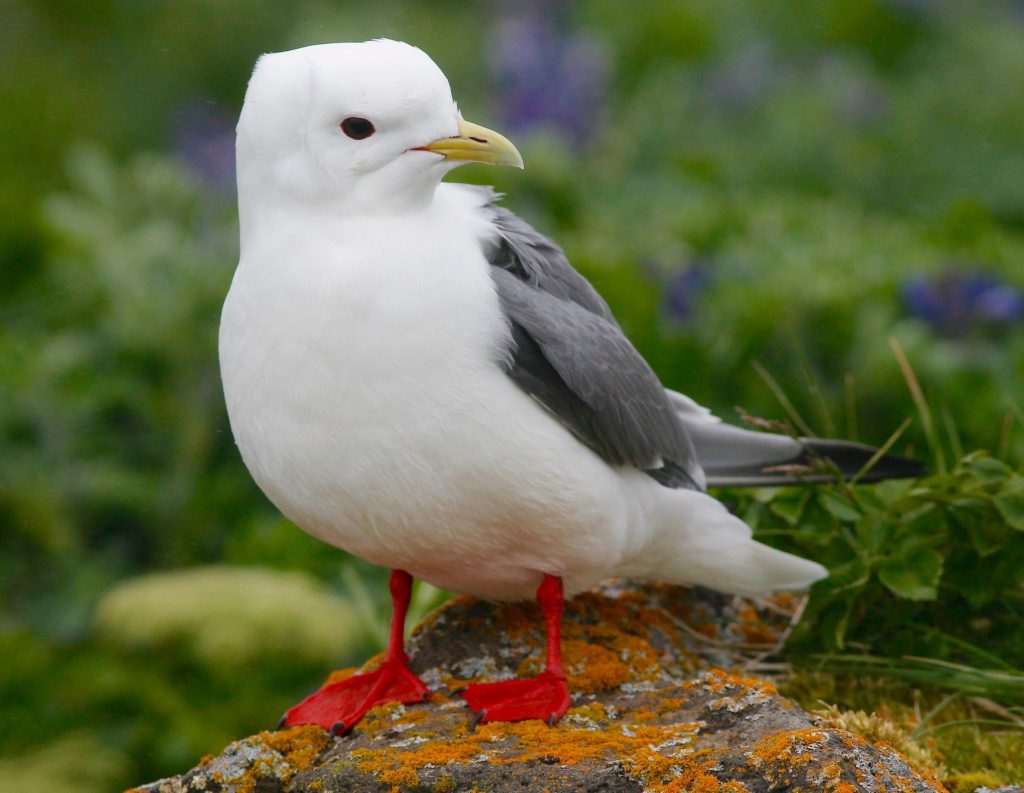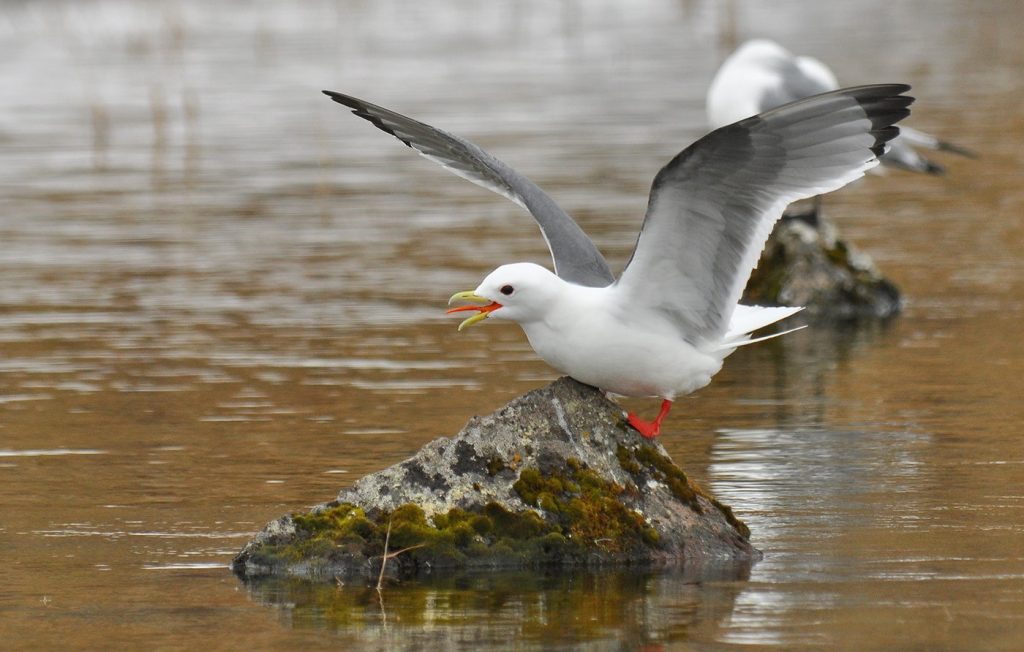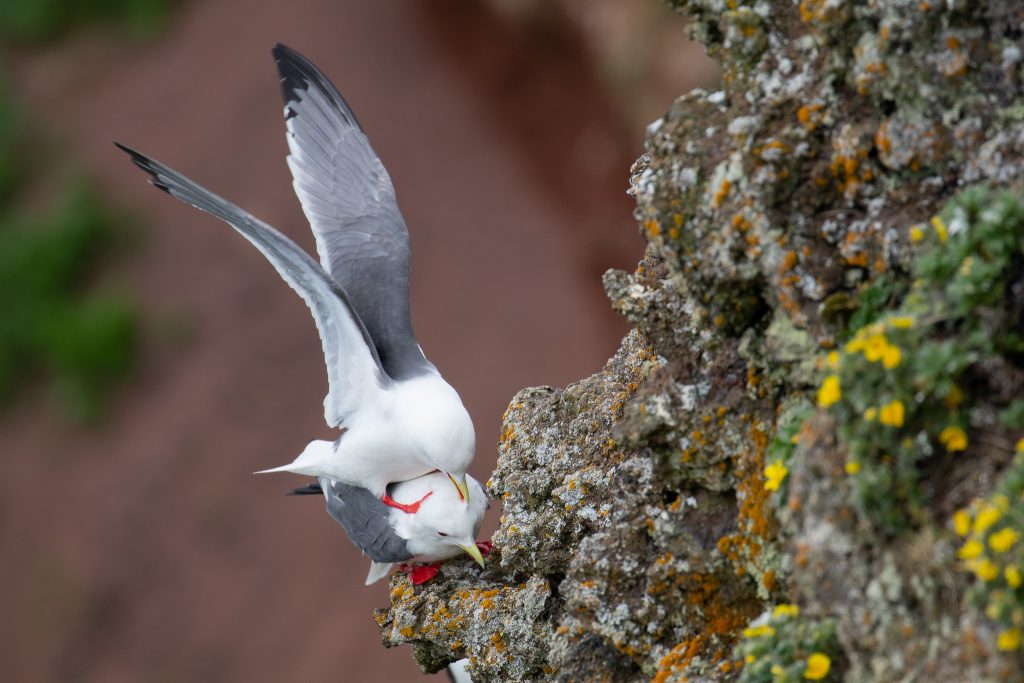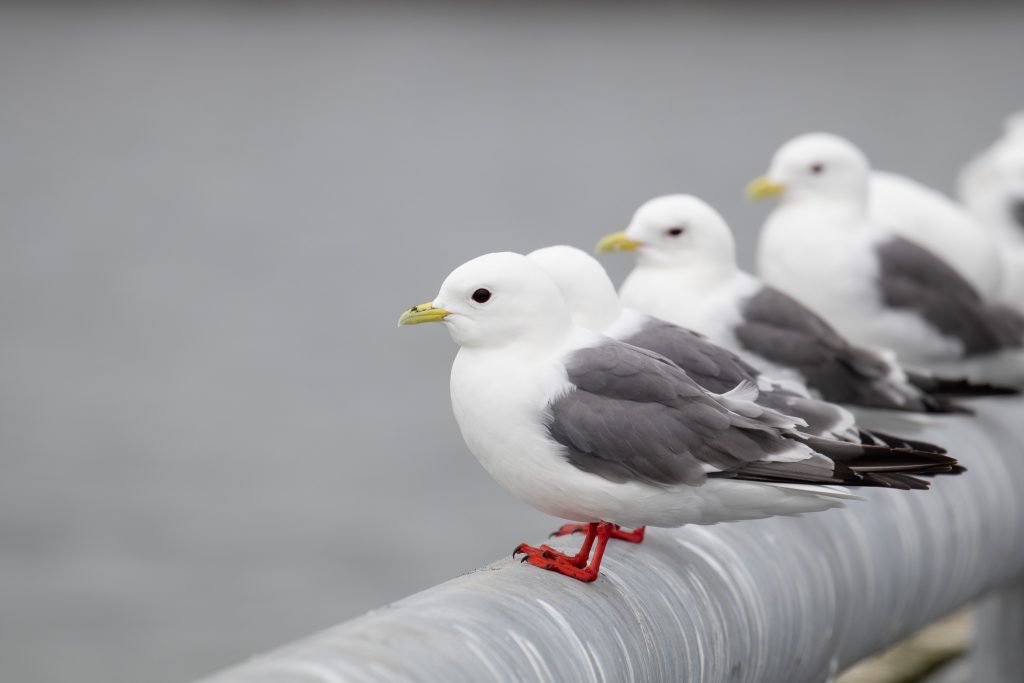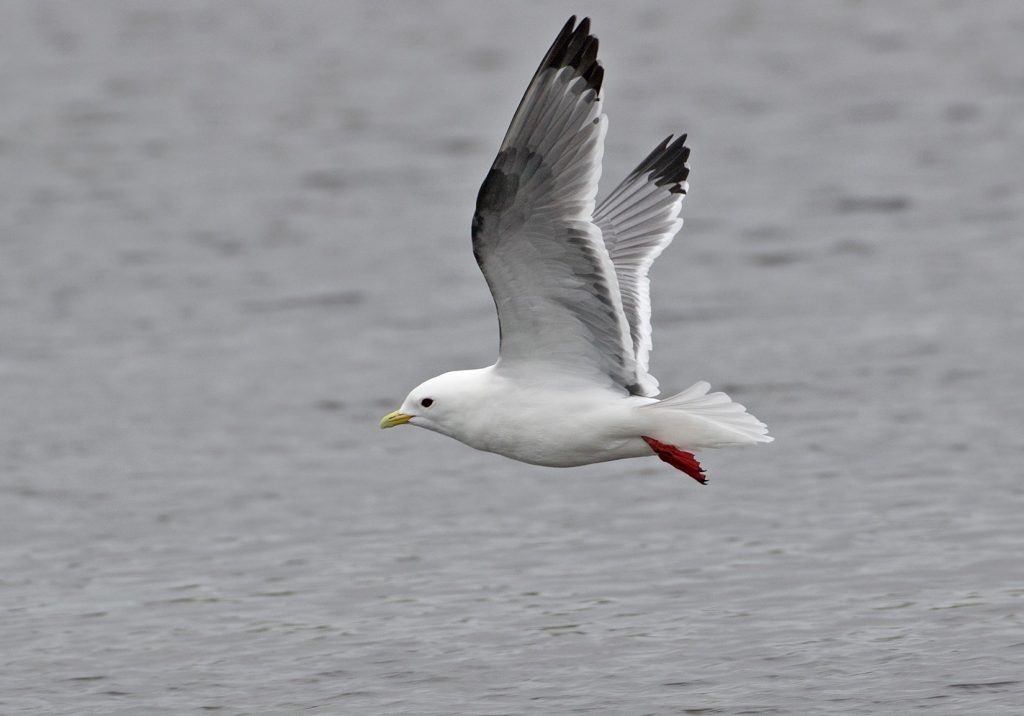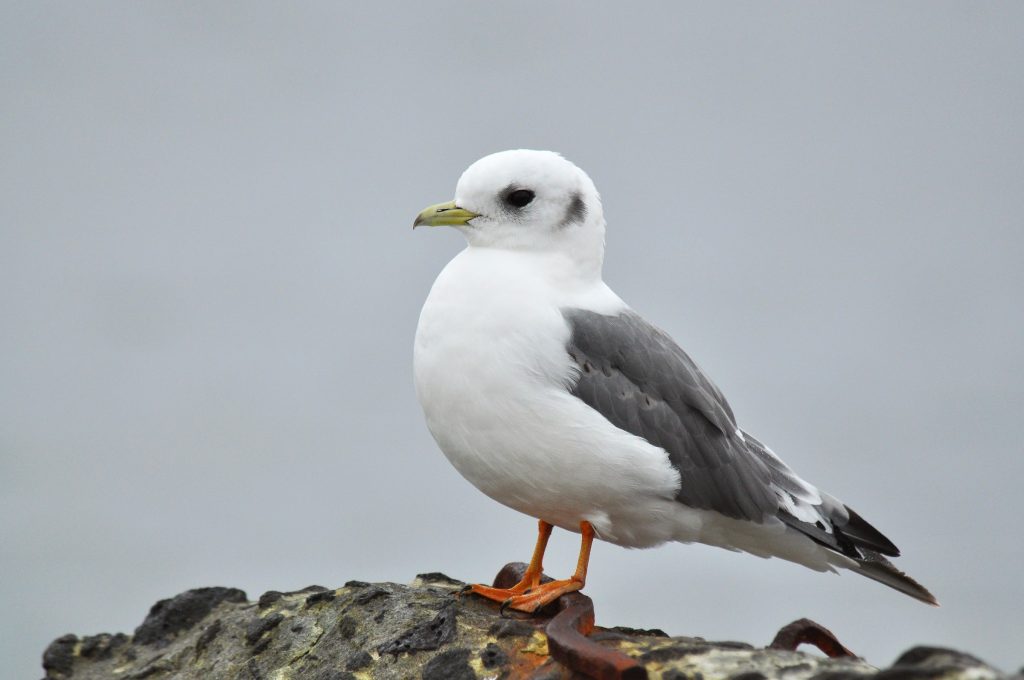A common, or abundant, species depending on location and timing in the Pribilofs, this species breeds in very large numbers on St. George Island, with smaller numbers on St. Paul and Otter Islands. Much like the Black-legged Kittiwake (Rissa tridactyla), this species typically arrives at the islands each year from mid-March to mid-April depending on the severity of the winter. By early May they are present in the hundreds or thousands on their breeding islands and are present in similar numbers through the summer. The breeding season typically begins for this species in June with hatchlings present during July and fledging of young during August and September. Population estimates for this species include 75,000-100,000 breeding pairs on St. George Island, 500-1,000 breeding pairs on St. Paul Island, and 100-200 breeding pairs on Otter Island, which accounts for approximately 90-95% of the world’s population of this species. After breeding has been completed, most individuals move offshore of the islands with small numbers present by late September. These small numbers typically continue through mid-October when this species can be difficult to find. The pattern of occurrence in late fall is poorly known, but they likely leave the islands proper entirely by early winter. This species is not known to winter locally on a regular basis with only a couple mid-winter records from the Pribilofs and Bering Sea, though its pelagic nature means little is known about local movements at that time and it may be more common at sea near the Pribilofs during milder winters.
